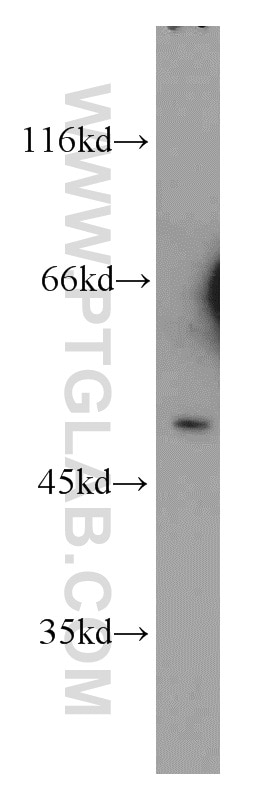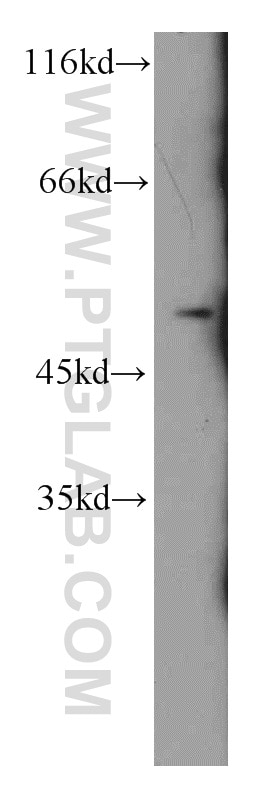Anticorps Polyclonal de lapin anti-CHRNA10
CHRNA10 Polyclonal Antibody for WB, ELISA
Hôte / Isotype
Lapin / IgG
Réactivité testée
Humain, rat, souris
Applications
WB, ELISA
Conjugaison
Non conjugué
N° de cat : 55291-1-AP
Synonymes
Galerie de données de validation
Applications testées
| Résultats positifs en WB | cellules Raji, cellules Jurkat |
Dilution recommandée
| Application | Dilution |
|---|---|
| Western Blot (WB) | WB : 1:200-1:1000 |
| It is recommended that this reagent should be titrated in each testing system to obtain optimal results. | |
| Sample-dependent, check data in validation data gallery | |
Informations sur le produit
55291-1-AP cible CHRNA10 dans les applications de WB, ELISA et montre une réactivité avec des échantillons Humain, rat, souris
| Réactivité | Humain, rat, souris |
| Hôte / Isotype | Lapin / IgG |
| Clonalité | Polyclonal |
| Type | Anticorps |
| Immunogène | Peptide |
| Nom complet | cholinergic receptor, nicotinic, alpha 10 |
| Masse moléculaire calculée | 50 kDa |
| Poids moléculaire observé | 50-52 kDa |
| Numéro d’acquisition GenBank | NM_020402 |
| Symbole du gène | CHRNA10 |
| Identification du gène (NCBI) | 57053 |
| Conjugaison | Non conjugué |
| Forme | Liquide |
| Méthode de purification | Purification par affinité contre l'antigène |
| Tampon de stockage | PBS with 0.02% sodium azide and 50% glycerol |
| Conditions de stockage | Stocker à -20 ℃. L'aliquotage n'est pas nécessaire pour le stockage à -20oC Les 20ul contiennent 0,1% de BSA. |
Informations générales
CHRNA10, also named as NACHRA10, belongs to the ligand-gated ion channel (TC 1.A.9) family, Acetylcholine receptor (TC 1.A.9.1) subfamily and Alpha-10/CHRNA10 sub-subfamily. It is an ionotropic receptor with a probable role in the modulation of auditory stimuli. In the ear, CHRNA10 may lead to a reduction in basilar membrane motion, altering the activity of auditory nerve fibers and reducing the range of dynamic hearing. It may protect against acoustic trauma. This antibody is specific to CHRNA10.
Protocole
| Product Specific Protocols | |
|---|---|
| WB protocol for CHRNA10 antibody 55291-1-AP | Download protocol |
| Standard Protocols | |
|---|---|
| Click here to view our Standard Protocols |



